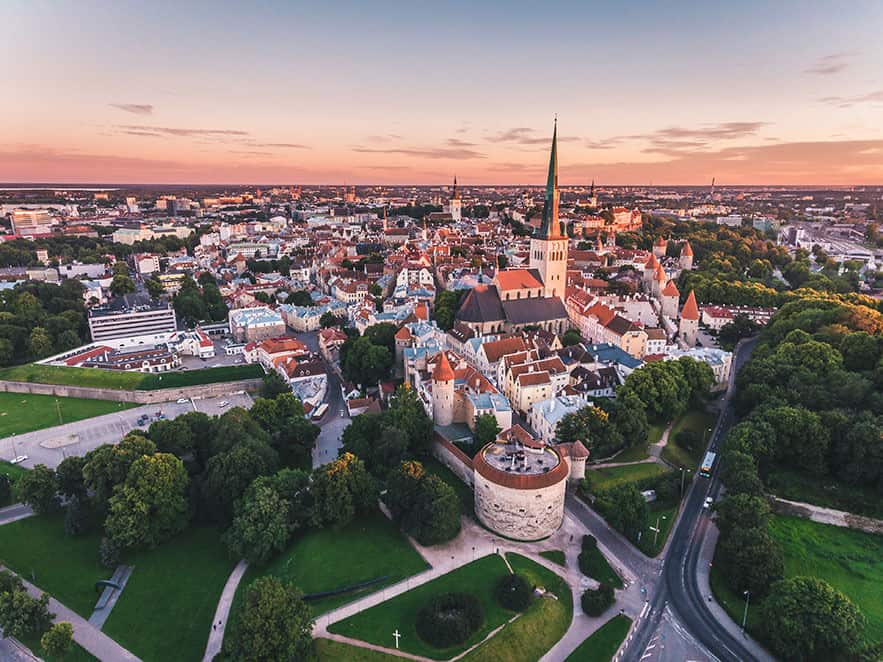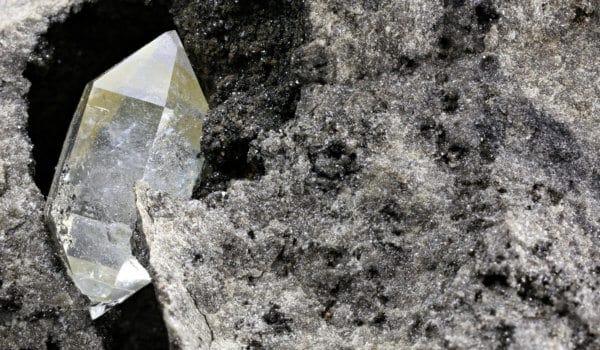We arrived in Estonia to find that the Baltic coast was completely frozen. You could walk safely on the ice, if you managed to find a way to escape the dank wind.
For a few hours we had to walk through the narrow streets of the Old Town and pretend that we didn’t notice the cold. Our smiling tour guide, Pille, wearing a fur hat with earflaps over her snow-white hair, told us stories about the legends and ghosts of medieval Tallinn: “Historians argue that the city had its origins in 1219, when king Valdemar II of Denmark invaded the neighborhood and founded the city of Reval. According to my favorite legend, during a battle with the Estonians, the Danes underestimated their opponent. Suddenly a red cloth with a white cross in the middle fell from the sky. Considering it a sign from above, the Danes took courage and won the battle, and eight centuries later they still use the Dannebrog (red cloth with the white cross) as their national flag”. By the way, the Estonian tricolor consists of blue, black, and white. Estonians say that their flag was inspired by Estonian nature: the sky, the earth, and the snow. As a joke, they add that Estonia is one of the few countries where the national flag can be reproduced by photographing the local scenery.
The second legend really surprised me. In the church, which bears the name of St. Nicholas, or Nikuliste in Estonian, for a long time there was a mummy kept there. It was the body of Duke Charles Eugene de Croy, who was captured by the Swedes during the Battle of Narva. He quickly settled down in Tallinn and started to waste the money of the local residents, amassing huge debts, and making many enemies. According to the Lübeck law, which governed the Hanseatic cities, the Duke was ordered to stay in Tallinn until he paid off his debts. But in 1702, long before repaying his creditors, Charles unexpectedly died. It was decided during a general meeting not to bury the debtor. So he lay in the basement of the church for 118 years until he was accidentally rediscovered. When he was brought into the light, everybody was surprised to find that he had been mummified! People speculated that the Duke’s body had become “embalmed” due to excessive consumption of alcohol. The sensational discovery attracted many onlookers, each of whom traditionally left a coin.
It is amazing that in such a relatively small town there are over 70 legends! Fortunately, Pille did not tell us all of them, otherwise I would have definitely been frozen to the Estonian ground. To help us warm up, we were taught an unusual sport called “kiiking” (in the Estonian language, «kiik» means a swing), invented in 1997 by a resident of the city of Parnu Ado Kosk. The core is to make a 360 degree turn on a longest swing in the shortest amount of time by going over the spindle of the swing. When during our youth we were swinging the same way, we couldn’t even imagine that someone could make a national sport out of it and even get into the Guinness Book of Records.
I didn’t chicken out on another unusual sport. The Finnish way of having fun by carrying one’s wife through obstacles has grown from a simple competition into a major annual championship, which has been taking place in Sonkayarvi since 1992. Historically, the Estonians usually win this championship. Two-time champion Madis Uuosorg told us that the rules state that the wife or girlfriend should be at least 17 years old and should weigh at least 49 kg. I almost fulfilled these requirements (“almost” refers to the age). The champion threw me over his shoulders like a sack, and ran through the obstacles. Poor women! Not only do they hang upside down, but they also constantly keep on hitting the “husband’s” back. Fortunately, we ran less than the required 253.5 meters, and, as for obstacles, there was only a mat. I get nauseous simply thinking about it.
Estonia knows how to surprise. I got proof of this once again at the end of the trip when we climbed up to the highest point in the country. It was very easy to climb to the top as the highest point is only 318 meters above sea level! I can say even more, this hill is also the highest point in all the Baltic States! And some say that Estonians don’t have a sense of humor. Apparently, the one who called it Suur-Munamagi was a real joker, because this name can be translated as “Big Egg Mountain” (“suur” – big , “muna” – egg, “magi” – mountain). The height of the hill has been increased by almost 26 meters due to a concrete tower which offers a view of the vast Russian and Latvian plains.
Photo: Shutterstock
Support us!
All your donations will be used to pay the magazine’s journalists and to support the ongoing costs of maintaining the site.
Share this post
Interested in co-operating with us?
We are open to co-operation from writers and businesses alike. You can reach us on our email at [email protected]/[email protected] and we will get back to you as quick as we can.









